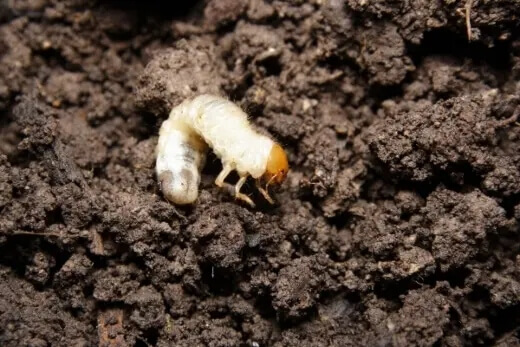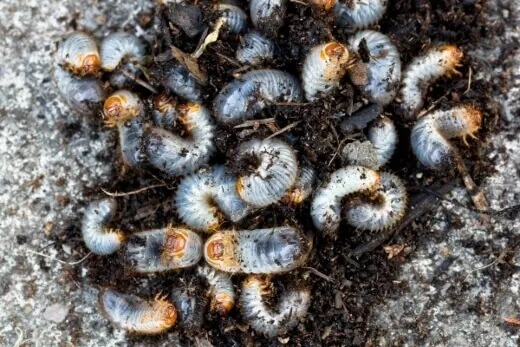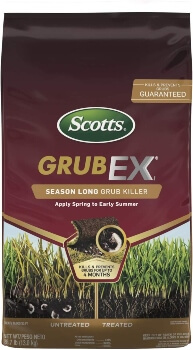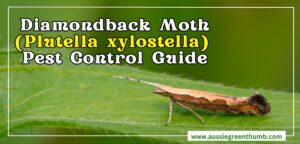Keeping your lawn looking lush, healthy, and pristine means getting rid of invading pests – fast. One of the most common pests are lawn grubs, and these fat, small worms can do a surprising amount of damage to grassed areas in a very short amount of time!
Here’s some useful insights on hot to spot lawn grubs, what they are, and how to get rid of them for good.
More...

What are Lawn Grubs?

Also called grub worm, surface dwelling caterpillars or chafer grubs, lawn grubs are a name for different types of common beetle larvae, including Japanese beetles, June bugs, and European chafers.
They are white, fat, and short with a darker brown head, and typically curl into a C-shape. They emerge in the spring and start eating organic matter voraciously, and especially love tender grass roots.
Once the grubs mature, they turn into adult beetles, many varieties of which feed off plant foliage and flowers.
Why Eliminate Grub Worms?
Once lawn grubs start appearing, the population will keep growing every year. The grubs will eat your lawn and other vulnerable plants, and the beetles they mature into can destroy your crops and flowers.
By eliminating the grub worms, you stop this lifecycle, protecting your lawn and plants while preventing infestations in other gardens in your neighbourhood.
How to Tell If You Have a Lawn Grub Infestation
Lawn grubs live in the top layer of the soil, so it’s not always easy to detect an infestation before it gets bad. Here’s what to look for.
- Browning grass – Circular patches of unexplained dead or dying grass are one of the most common signs of grubs. This is because once the roots have been eaten, the leaves of the grass wither and die.
- White grubs – If you come across white grubs on a regular basis while gardening (especially if you are weeding or aerating your lawn), then it’s time to treat it for these pests.
Don’t worry if you only see one or two on occasion, as your garden can likely support them with ease. But if you are seeing larger numbers like 10 or more in a patch, it’s time to act. - Spongy lawn – When grubs are present, the lawn and soil can feel spongy, and it can be easy to pull up your grass.
How to Treat Lawn Grub Infestations

- Timing - The best time to treat your lawn and get rid of this common garden pest is in spring, when the grubs are newly hatched. Grubs can also start appearing in the early autumn, so if you have treated your lawn in spring, it’s a good idea to re-treat it in the autumn to properly break this cycle.
- Moisture – Eggs hatch in moist conditions, so water your lawn well for a week or two before you treat it. This will make sure that the eggs are hatched when the pesticide is applied.
- Water in – To get your natural or chemical pesticide into the soil and to the grubs, water your treatment in so that it soaks into the first 10cm of the soil. Do not apply it before heavy rains, as this may wash it away.
- Chat to your neighbours – These pests spread and migrate quite quickly, so it’s a good idea to chat to your neighbours about keeping an eye on their lawns.
If a bordering garden has an infestation, it will keep spreading to your lawn while it remains untreated. - Go natural – Wherever possible, try to use a natural, eco-friendly lawn grub treatment. This will limit the damage a pesticide can do to beneficial insects, the water table, and the local ecosystem.
How to Get Rid of Grubs in Grass
Dealing with a grub problem usually means using a pesticide. A preventive application in the spring will kill the grubs that have already hatched and keep new ones from hatching throughout the season.
Because preventive pesticides are typically combined with fertiliser, it’s important to apply them in the spring, so they don’t burn the grass. Watering is also important, to ensure that the pesticide reaches deep into the soil where the grubs are hiding.
A curative application is in order if you discover a widespread grub problem. These pesticides will kill the larvae on contact, but don’t work for as long. It’s usually best to call a professional for curative pesticides.
Watering your lawn appropriately can help in grub control. Grubs love moisture – and tend to die out in drought conditions – so watering your lawn infrequently but deeply can help keep grubs away by preventing the soil from being too moist.
Keep an eye on how your neighbours’ lawns look as well. Grubs are rarely limited to one yard, so if you see signs in your neighbourhood, it’s likely you have the pesky critters as well.
Best Lawn Grub Killers for Lawns
1. Scotts GrubEx1 Grub Killer for Lawns

With one application in spring, you can treat your lawn and prevent grubs for up to 4 months, providing full coverage through the season.


Get Your Free Guide:
Master Growing Australian Natives eBook
A Must Have Complete Guide for Every Australian Garden
Get Your Free Guide:
Master Growing Australian Natives eBook
A Must Have Complete Guide for Every Australian Garden
Annual use will help keep Japanese beetles under control, and help protect your flowers and vegetable garden crops. It will also kill armyworms, chinch bugs, cranefly larvae, and billbug larvae.
2. St. Gabriel Organics 80010-9 Milky Spore Powder

This is an organic pest control solution made from milky spores, a bacterium that was the first way to control Japanese beetles through biological disease.
It is very effective at controlling these and other lawn grubs, as well as chafer beetles, weevils, and emerald ash borers. It is nontoxic to insects, pollinators, and birds, and is pet/family friendly too!
Lawn Grubs Pesticide/Insecticide Alternatives

If you don’t want to use a pesticide or organic grub control product, there are a few other methods you can try to control white grubs in soil.
- Beneficial nematodes - Heterorhabditis bacteriophora is a nematode (worm) that eat young beetle larvae as well as gnat, flea and whitefly larvae, and thrips.
It’s a useful form of organic pest control that supports your yard’s ecosystem and does no harm to the environment. You can also add them to your home compost to help prevent maggots! - Drought – Beetle eggs need moisture to hatch and live, so take advantage of a dry spring when you can and avoid watering your lawn for about a month.
It may look dry and dusty, but the roots will remain alive and the grass will spring back much faster when you do eventually water.
How to Repair Lawn Grub Damage
After you’ve treated your lawn with an effective lawn grub killer, you’ll need to repair the damage to your grass. We recommend that you try overseeding your lawn to help it bounce back, and help your lawn regrow and flourish.
Now you know how to deal with lawn grubs, be sure to check our list of other common lawn problems you may encounter and how to fix them.
Say Goodbye to Lawn Grubs for Good!
A few lawn grubs are nothing to panic about, but if they start killing off large patches of grass then it’s time to take action. As always, we highly recommend that you try an organic solution first – either introducing beneficial nematodes or using a milky spore product – to minimise harm to the environment.
These solutions are also the most pet and family friendly and won’t harm birds and other animals that feed off grubs, making them the best way to get rid of lawn grubs!
Published on January 20, 2023 by Gary Clarke
Last Updated on October 4, 2025




